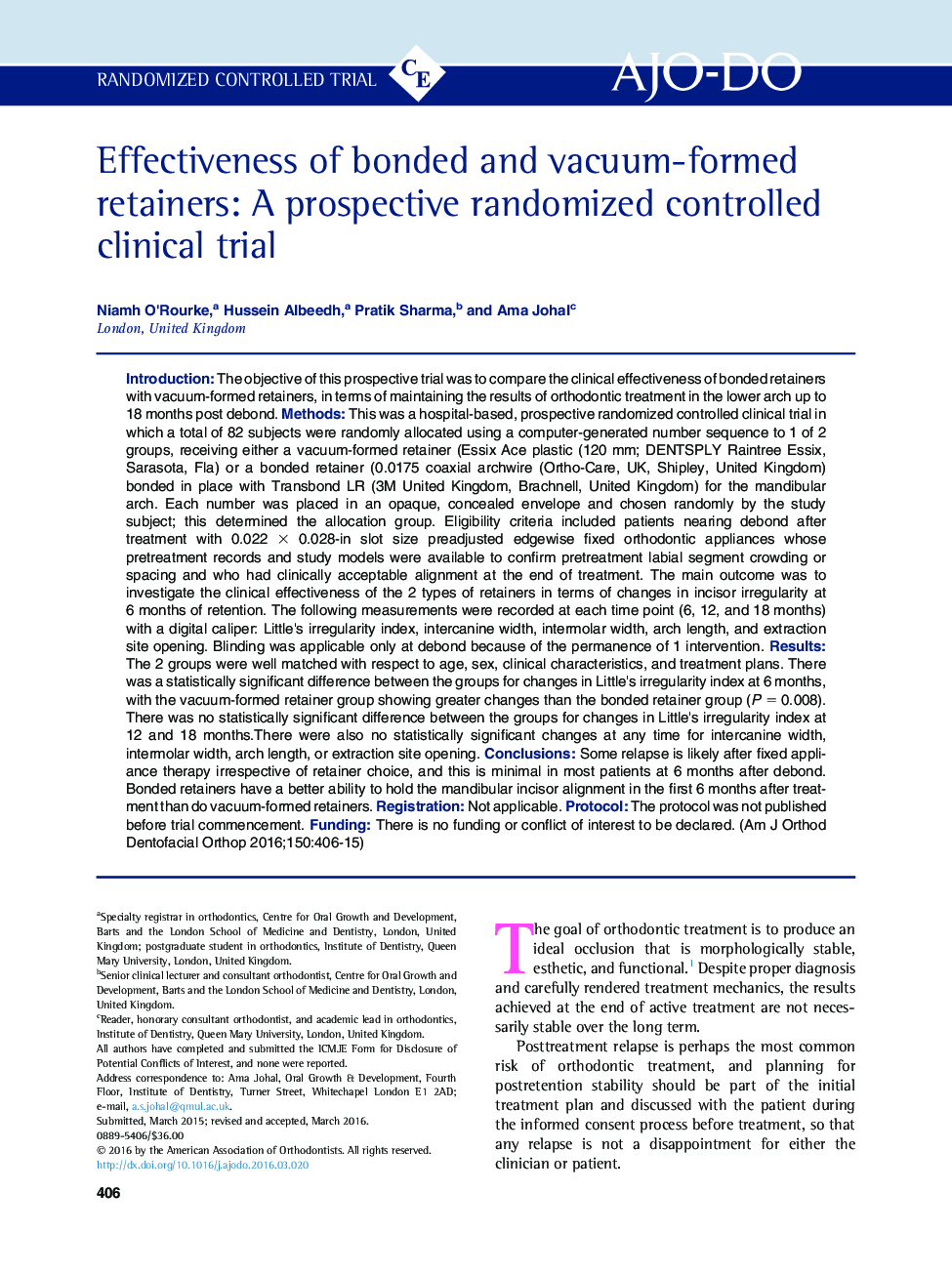| Article ID | Journal | Published Year | Pages | File Type |
|---|---|---|---|---|
| 3115221 | American Journal of Orthodontics and Dentofacial Orthopedics | 2016 | 10 Pages |
•The clinical effectiveness of bonded and vacuum-formed retainers was compared.•Bonded retainers maintained better mandibular incisor alignment in the first 6 months.•Changes in the first 18 months were minimal in both groups.
IntroductionThe objective of this prospective trial was to compare the clinical effectiveness of bonded retainers with vacuum-formed retainers, in terms of maintaining the results of orthodontic treatment in the lower arch up to 18 months post debond.MethodsThis was a hospital-based, prospective randomized controlled clinical trial in which a total of 82 subjects were randomly allocated using a computer-generated number sequence to 1 of 2 groups, receiving either a vacuum-formed retainer (Essix Ace plastic (120 mm; DENTSPLY Raintree Essix, Sarasota, Fla) or a bonded retainer (0.0175 coaxial archwire (Ortho-Care, UK, Shipley, United Kingdom) bonded in place with Transbond LR (3M United Kingdom, Brachnell, United Kingdom) for the mandibular arch. Each number was placed in an opaque, concealed envelope and chosen randomly by the study subject; this determined the allocation group. Eligibility criteria included patients nearing debond after treatment with 0.022 × 0.028-in slot size preadjusted edgewise fixed orthodontic appliances whose pretreatment records and study models were available to confirm pretreatment labial segment crowding or spacing and who had clinically acceptable alignment at the end of treatment. The main outcome was to investigate the clinical effectiveness of the 2 types of retainers in terms of changes in incisor irregularity at 6 months of retention. The following measurements were recorded at each time point (6, 12, and 18 months) with a digital caliper: Little's irregularity index, intercanine width, intermolar width, arch length, and extraction site opening. Blinding was applicable only at debond because of the permanence of 1 intervention.ResultsThe 2 groups were well matched with respect to age, sex, clinical characteristics, and treatment plans. There was a statistically significant difference between the groups for changes in Little's irregularity index at 6 months, with the vacuum-formed retainer group showing greater changes than the bonded retainer group (P = 0.008). There was no statistically significant difference between the groups for changes in Little's irregularity index at 12 and 18 months.There were also no statistically significant changes at any time for intercanine width, intermolar width, arch length, or extraction site opening.ConclusionsSome relapse is likely after fixed appliance therapy irrespective of retainer choice, and this is minimal in most patients at 6 months after debond. Bonded retainers have a better ability to hold the mandibular incisor alignment in the first 6 months after treatment than do vacuum-formed retainers.RegistrationNot applicable.ProtocolThe protocol was not published before trial commencement.FundingThere is no funding or conflict of interest to be declared.
